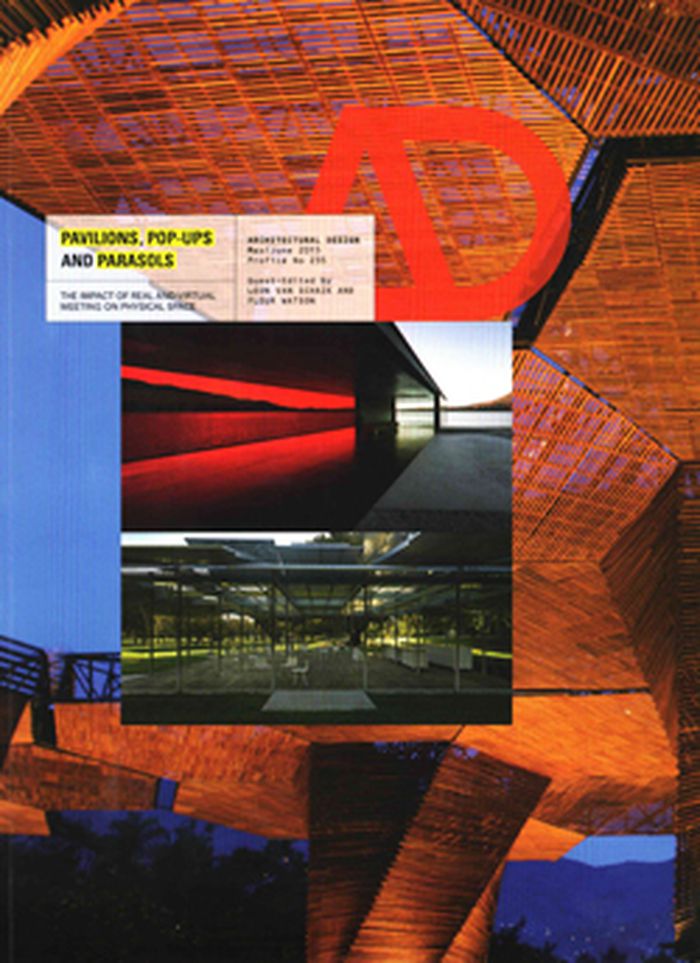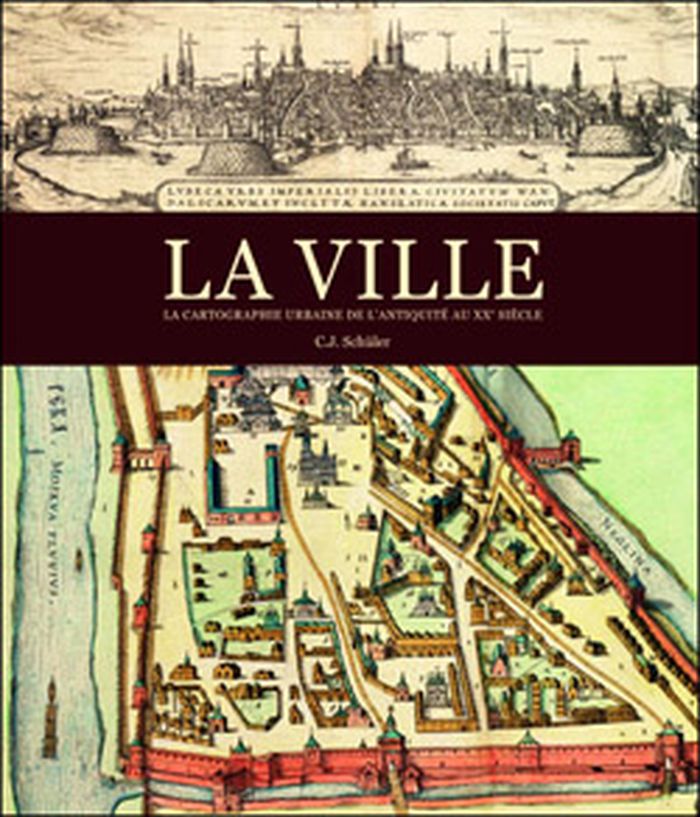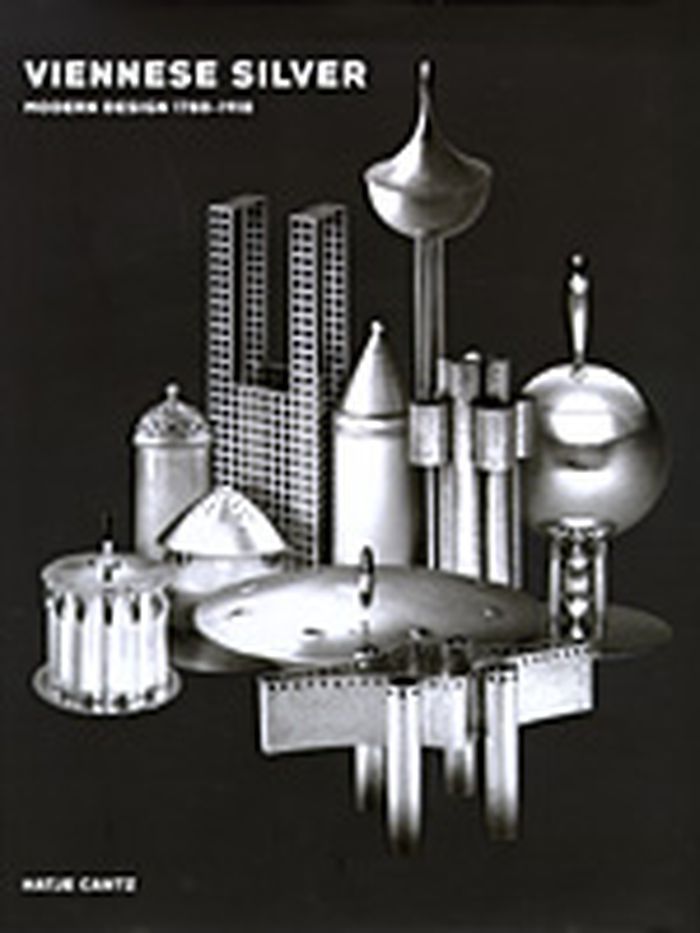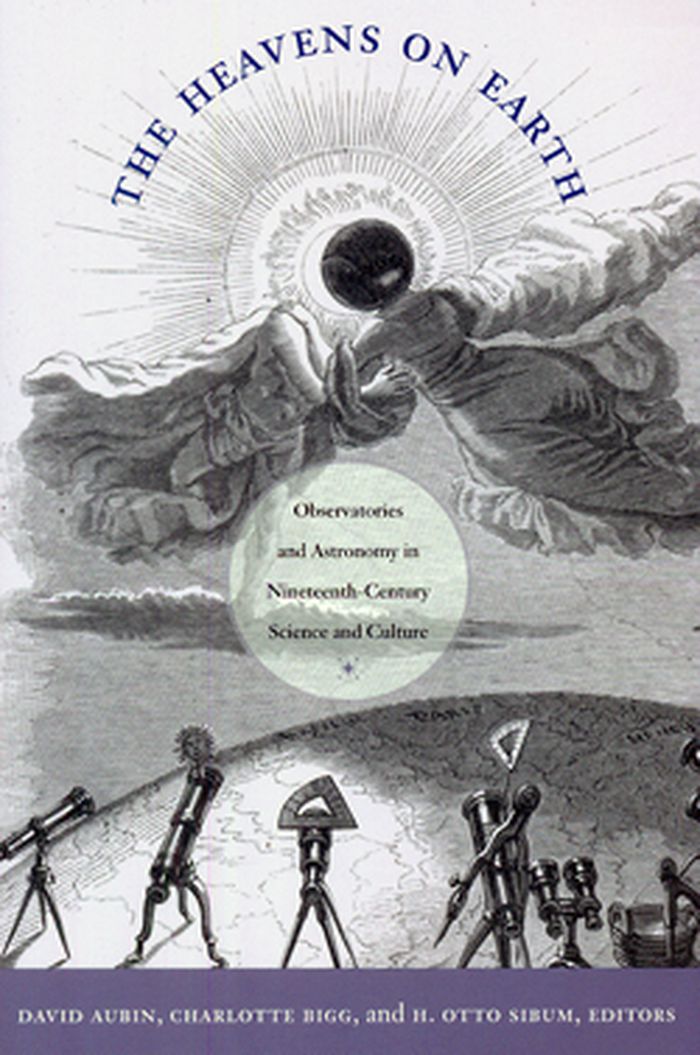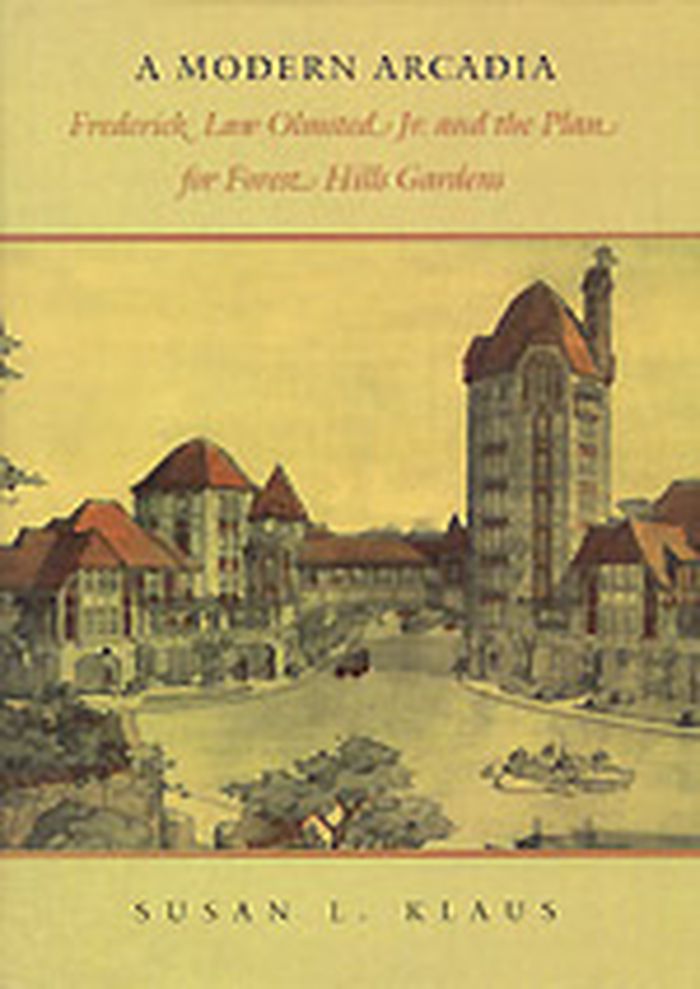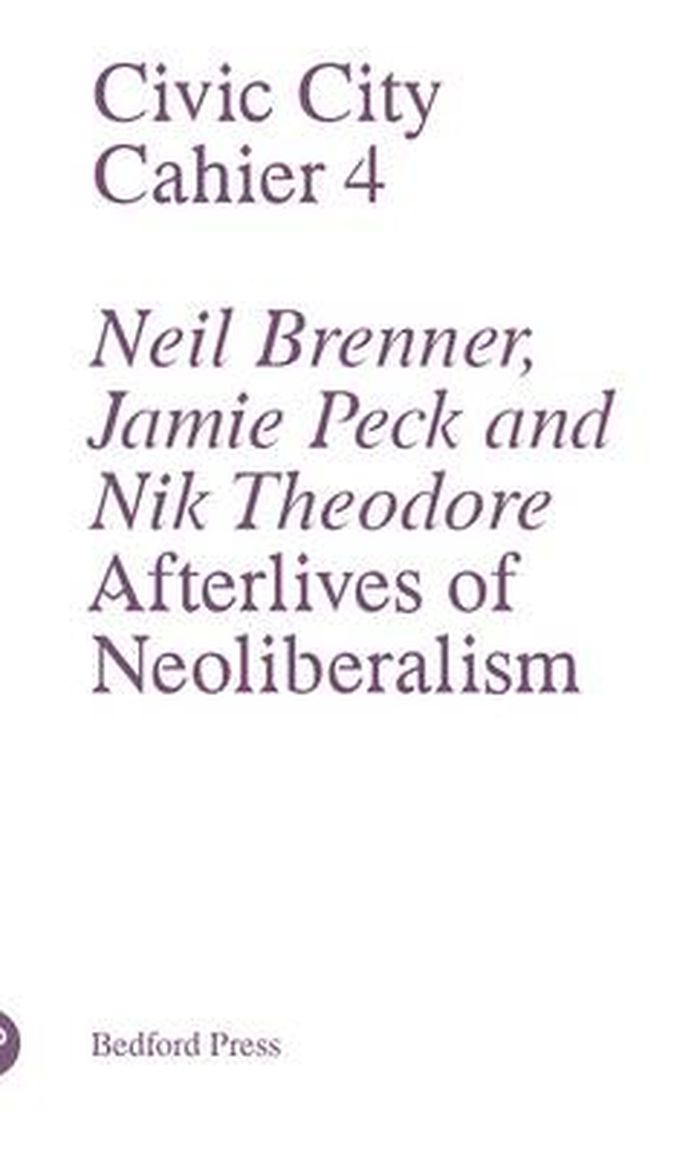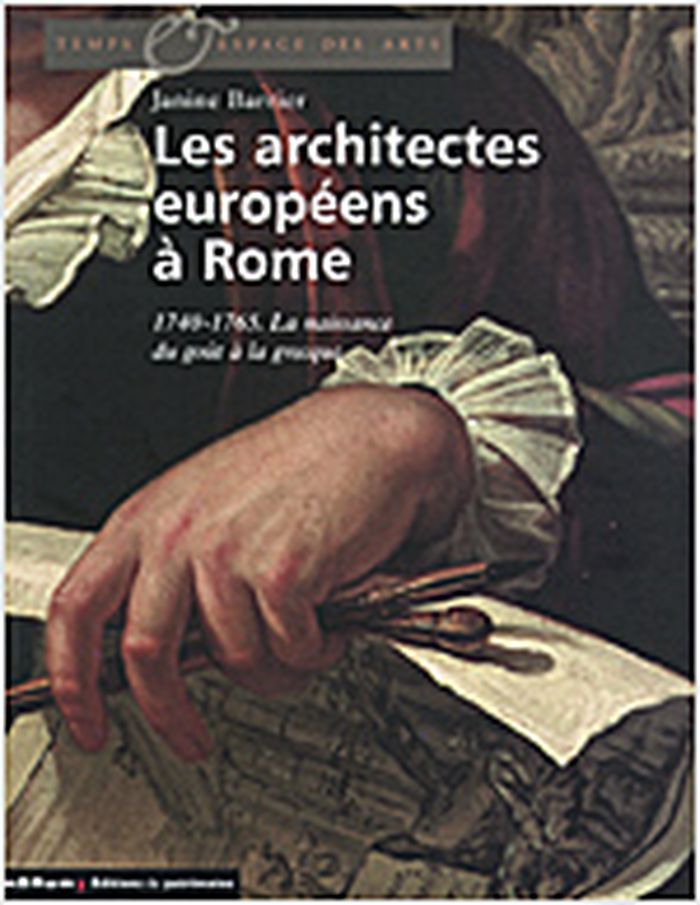$34.95
(available to order)
Summary:
Piecing Together Los Angeles: An Esther McCoy Reader is the first anthology of McCoy's writing. It features a selection of some 70 pieces--ranging from her 1945 article "Schindler, Space Architect" to "Arts & Architecture: Case Study Houses," a 1989 essay commissioned by the Museum of Contemporary Art, Los Angeles. From fiction for The New Yorker to seminal essays on(...)
Piecing together Los Angeles: an Esther McCoy reader
Actions:
Price:
$34.95
(available to order)
Summary:
Piecing Together Los Angeles: An Esther McCoy Reader is the first anthology of McCoy's writing. It features a selection of some 70 pieces--ranging from her 1945 article "Schindler, Space Architect" to "Arts & Architecture: Case Study Houses," a 1989 essay commissioned by the Museum of Contemporary Art, Los Angeles. From fiction for The New Yorker to seminal essays on new architectural forms, McCoy charts the progressive edge of American idealism, from the collective utopian spirit of Jazz Age Greenwich Village, through the Depression and the war years, to the optimism of the 1950s and 1960s. In preparing this volume, writer and editor Susan Morgan extensively researched the McCoy papers at the Archives of American Art. Her editorial decisions were based, in part, on McCoy's original selections for an unrealized anthology solicited by W. W. Norton in 1968.
Urban Theory
$43.95
(available to order)
Summary:
Around the world, a new architectural form is emerging. In public places a progressive architecture is being commissioned to promote open-ended, undetermined, lightly programmed or un-programmed interactions between people. This new phenomenon of architectural form – Pavilions, Pop-Ups and Parasols – is presaged by rapidly changing social relationships flowing from social(...)
Pavilions, pop ups and parasols: the impact of real and virtual meeting on physical space
Actions:
Price:
$43.95
(available to order)
Summary:
Around the world, a new architectural form is emerging. In public places a progressive architecture is being commissioned to promote open-ended, undetermined, lightly programmed or un-programmed interactions between people. This new phenomenon of architectural form – Pavilions, Pop-Ups and Parasols – is presaged by rapidly changing social relationships flowing from social media such as Facebook, Twitter and Instagram. The nexus between real and virtual meeting is effectively being reinvented by innovative and creative architectural practices. People meet in new and responsive ways, architects meet their clients in new forums, knowledge is ‘met’ and achieved in new and interactive frameworks. It contrasts bluntly with the commercially structured interactions of shopping malls and the increasingly deliberate interactions available in cultural institutions. These experiences imbue a new type of client; casually engaged, flocking, hacking, crowd funding and self-helping.
Magazines
$85.00
(available to order)
Summary:
La ville a offert de multiples visages depuis son apparition en Mésopotamie et dans la vallée de l'Indus, voici environ 10 000 ans, et héberge aujourd'hui la moitié de l'humanité. L'appréhension du milieu urbain fut toutefois progressive et plurielle. Les quelque 200 cartes de la collection exceptionnelle de la Royal Geographical Society nous montrent comment l'homme a(...)
La ville: la cartographie urbaine de l'antiquité au XXe siècle
Actions:
Price:
$85.00
(available to order)
Summary:
La ville a offert de multiples visages depuis son apparition en Mésopotamie et dans la vallée de l'Indus, voici environ 10 000 ans, et héberge aujourd'hui la moitié de l'humanité. L'appréhension du milieu urbain fut toutefois progressive et plurielle. Les quelque 200 cartes de la collection exceptionnelle de la Royal Geographical Society nous montrent comment l'homme a imaginé, puis dessiné la ville. Par les tablettes en terre cuite des Babyloniens aux plans très précis du milieu du XXe siècle, en passant par les peintures et les enluminures médiévales, ce livre nous entraîne dans les cités, les bourgs et les métropoles de différentes époques.
Architectural Plans and Cartography
$19.99
(available in store)
Summary:
This sumptuously illustrated volume presents over 180 outstanding Viennese silver objects representing the period from Neoclassicism to the Wiener Werkstätte. Comparing early eighteenth-century works with examples of twentieth-century design and architecture, it offers a fascinating look at Vienna's contribution to the development of modern decorative arts. The authors(...)
August 2003, Ostfildern
Viennese silver : modern design 1780-1918
Actions:
Price:
$19.99
(available in store)
Summary:
This sumptuously illustrated volume presents over 180 outstanding Viennese silver objects representing the period from Neoclassicism to the Wiener Werkstätte. Comparing early eighteenth-century works with examples of twentieth-century design and architecture, it offers a fascinating look at Vienna's contribution to the development of modern decorative arts. The authors demonstrate how the roots of modern design go back further than is generally assumed. Achieving remarkable clarity and formal reduction, Viennese Biedermeier designers created everyday objects of silver with astonishingly straightforward and purposeful forms that remain as progressive as ever today. In turn-of-the-century Vienna, Josef Hoffmann and Koloman Moser drew inspiration from the intellectual legacy of the period in their designs for the Wiener Werkstätte. Many of the ideas introduced by the Viennese avant-garde were later expressed in such movements as the Bauhaus and De Stijl. By examining this history in all its complexity, the book traces the development of the vocabulary for contemporary design.
$77.00
(available to order)
Summary:
This wide-ranging book examines the world’s most significant large-scale housing complexes, which point the way for the future of housing design. The seventy residential complexes featured here are recognized as architectural milestones, embodying forward-thinking attitudes towards urban planning. This book chronicles the evolution of these structures, revealing how(...)
Collective Housing
March 2006, Munich Berlin London New York
Housing in the 20th and 21st centuries / Wohen im 20. umd 21. jahrundert
Actions:
Price:
$77.00
(available to order)
Summary:
This wide-ranging book examines the world’s most significant large-scale housing complexes, which point the way for the future of housing design. The seventy residential complexes featured here are recognized as architectural milestones, embodying forward-thinking attitudes towards urban planning. This book chronicles the evolution of these structures, revealing how each best represented its era’s goals: housing a new society in the 1920s and 30s; the 40s and 50s’ leap toward functionality and the future; the high-density urban projects of the 60s and 70s; and diversity and environmental awareness in the 80s and 90s. It also looks at this century’s most progressive developments: Beijing’s Looped Hybrid, a city within a city; India’s Aranya township, which provides housing for impoverished residents; and the environmentally friendly Solaire Apartments in Manhattan, among others. As today’s cities face myriad global challenges, this book provides ample food for thought for anyone concerned with socially responsible architecture.
Collective Housing
The heavens on earth : observatories and astronomies in nineteeth-century science and culture
$41.50
(available to order)
Summary:
This book explores the place of the observatory in nineteenth-century science and culture. Astronomy was a core pursuit for observatories, but usually not the only one. It belonged to a larger group of "observatory sciences" that also included geodesy, meteorology, geomagnetism, and even parts of physics and statistics. These pursuits coexisted in the nineteenth-century(...)
Architectural Theory
April 2010
The heavens on earth : observatories and astronomies in nineteeth-century science and culture
Actions:
Price:
$41.50
(available to order)
Summary:
This book explores the place of the observatory in nineteenth-century science and culture. Astronomy was a core pursuit for observatories, but usually not the only one. It belonged to a larger group of "observatory sciences" that also included geodesy, meteorology, geomagnetism, and even parts of physics and statistics. These pursuits coexisted in the nineteenth-century observatory; this collection surveys them as a coherent whole. Broadening the focus beyond the solitary astronomer at his telescope, it illuminates the observatory’s importance to technological, military, political, and colonial undertakings, as well as in advancing and popularizing the mathematical, physical, and cosmological sciences. The contributors examine "observatory techniques" developed and used not only in connection with observatories but also by instrument makers in their workshops, navy officers on ships, civil engineers in the field, and many others. These techniques included the calibration and coordination of precision instruments for making observations and taking measurements; methods of data acquisition and tabulation; and the production of maps, drawings, and photographs, as well as numerical, textual, and visual representations of the heavens and the earth. They also encompassed the social management of personnel within observatories, the coordination of international scientific collaborations, and interactions with dignitaries and the public. The state observatory occupied a particularly privileged place in the life of the city. With their imposing architecture and ancient traditions, state observatories served representative purposes for their patrons, whether as symbols of a monarch’s enlightened power, a nation’s industrial and scientific excellence, or republican progressive values.
Architectural Theory
books
Graftworld
$21.95
(available to order)
Summary:
In addition to Graft’s the widely published projects, like the prize-winning Hotel Q in Berlin, Restaurants Fix and Stack in Las Vegas and several international houses, the exhibition will focus on the new and unpublished work of Graft, including numerous high-rise buildings, special hotel designs and private residences, research installations as well as public(...)
Graftworld
Actions:
Price:
$21.95
(available to order)
Summary:
In addition to Graft’s the widely published projects, like the prize-winning Hotel Q in Berlin, Restaurants Fix and Stack in Las Vegas and several international houses, the exhibition will focus on the new and unpublished work of Graft, including numerous high-rise buildings, special hotel designs and private residences, research installations as well as public projects. Graftworld refers to Graft’s specific method of work process, which fuses syntactic, semantic and phenomenological aspects into architecture. Graft uses narrative elements of cinema, exploiting space - time interconnections through storyboarding with progressive technical research of long term collaborations with various companies. The exhibit will showcase this methodology in an accessible, usable exhibition sculpture, an interactive lounge displaying not only projects of all three office locations but providing chillout zones to relax as well. Classical distinctive architecture elements like floor, wall and ceiling will be fused into a lounge-display-hybrid. Graftworld is thought to be inclusive and rather crosses and blurs boundaries than accepting their exclusive nature. This approach also touches on the increasing transition of distinct modern mono-functional living and working environments, that are blending into new urban lifestyles of the metropolitan nomads. Graftworld proposes architecture that can evolve to be sculpture, be furniture, be a product, be an urban scenario, be landscape at the same time. Design, methodology and technology are not classically “displayed”, but are integrated in the Graftworld.
books
January 2007, Berlin
small format
$63.95
(available to order)
Summary:
Conceived as an experiment that would apply the new "science" of city planning to a suburban setting, Forest Hills Gardens was created by the Russell Sage Foundation to provide housing for middle-class commuters as an alternative to cramped flats in New York City. Although it has long been recognized as one of the most influential planned communities in the United(...)
A modern Arcadia : Frederick Law Olmsted Jr. & the plan for Forest Hill Gardens
Actions:
Price:
$63.95
(available to order)
Summary:
Conceived as an experiment that would apply the new "science" of city planning to a suburban setting, Forest Hills Gardens was created by the Russell Sage Foundation to provide housing for middle-class commuters as an alternative to cramped flats in New York City. Although it has long been recognized as one of the most influential planned communities in the United States, this is the first time Forest Hills Gardens has been the subject of a book. Susan L. Klaus's fully illustrated history chronicles the creation of the 142-acre development from its inception in 1909 through its first two decades, offering critical insights into American planning history, landscape architecture, and the social and economic forces that shaped housing in the Progressive Era. Klaus focuses particularly on the creative genius of Frederick Law Olmsted Jr., who served as planner and landscape architect for the project. Drawing on his father's visionary ideas but developing his own perspective, the younger Olmsted redefined planning for the modern era and became one of the founders of the profession of city planning in the United States.
Gardens
$19.95
(available in store)
Summary:
In this text, Brenner, Peck and Theodore question the claim that neoliberalism has ended in the wake of the global economic crisis that began in September of 2008. The authors argue that this assumption rests upon an inadequate understanding of the reach and tenacity of the crisis-induced, market-disciplinary forms of regulatory restructuring that have accompanied the(...)
July 2011
Civic city cahier 4 : Afterlives of neoliberalism
Actions:
Price:
$19.95
(available in store)
Summary:
In this text, Brenner, Peck and Theodore question the claim that neoliberalism has ended in the wake of the global economic crisis that began in September of 2008. The authors argue that this assumption rests upon an inadequate understanding of the reach and tenacity of the crisis-induced, market-disciplinary forms of regulatory restructuring that have accompanied the neoliberalisation of cities, regions and states across the world. In contrast with the over-simplified, monolithic conceptualisations of the global economy that prevail in many popular and academic accounts, the authors emphasise the constitutively uneven, institutionally hybrid and chronically unstable character of neoliberalism. For urban designers, planners and activists working to promote more socially just and democratic forms of urbanism, Brenner, Peck and Theodore insist on the need to radically restructure the macroinstitutional "rules of the game" that variously encourage and disallow localities, cities and regions to adapt to market-based approaches to (re)investment, collective-goods provisioning, and social reproduction. "Absent this", they argue, "the potential of progressive postneoliberal projects will continue to be frustrated by the dead hand of market rule".
$77.95
(available to order)
Summary:
Dans les années 1730-1740, la " rocaille " connaît en France un épanouissement sans pareil, et tous les intérieurs se couvrent d'une débauche d'ornements dissymétriques alliant le minéral et le végétal. Mais les réactions ne tardent pas. Des théoriciens aspirent au retour du " goût simple et noble de l'antique ". Marc-Antoine Laugier, influencé par l'enseignement de(...)
Les architectes européens à Rome : 1740-1765, la naissance du goût à la grecque
Actions:
Price:
$77.95
(available to order)
Summary:
Dans les années 1730-1740, la " rocaille " connaît en France un épanouissement sans pareil, et tous les intérieurs se couvrent d'une débauche d'ornements dissymétriques alliant le minéral et le végétal. Mais les réactions ne tardent pas. Des théoriciens aspirent au retour du " goût simple et noble de l'antique ". Marc-Antoine Laugier, influencé par l'enseignement de l'érudit vénitien Carlo Lodoli, prône la supériorité d'une architecture fonctionnelle dont il retrouve en Grèce les fondements. Dans ce contexte, l'influence des idées et des œuvres de Piranèse puis l'étude simultanée des ruines grecques et romaines vont conduire à une évolution progressive des formes. Les artistes en résidence à l'Académie de France à Rome élaborent peu à peu une syntaxe et un vocabulaire nouveaux. Parmi ces pensionnaires se succéderont de jeunes architectes, Clérisseau, Peyre, De Wailly, Moreau, Chalgrin, qui côtoient dans la cité romaine leurs confrères étrangers, les Anglais William Chambers et Robert Adam, le Belge Laurent Benoît Dewez... Une profonde mutation se produit alors, qui donne naissance à un changement esthétique majeur, le " goût à la grecque ", prélude au néoclassicisme. Ainsi le piranésisme laissera-t-il son empreinte jusqu'à la fin du siècle sur plusieurs générations d'architectes, comme en témoignent les œuvres de Sir John Soane, d'Etienne Louis Boullée et de Claude Nicolas Ledoux.
History until 1900

